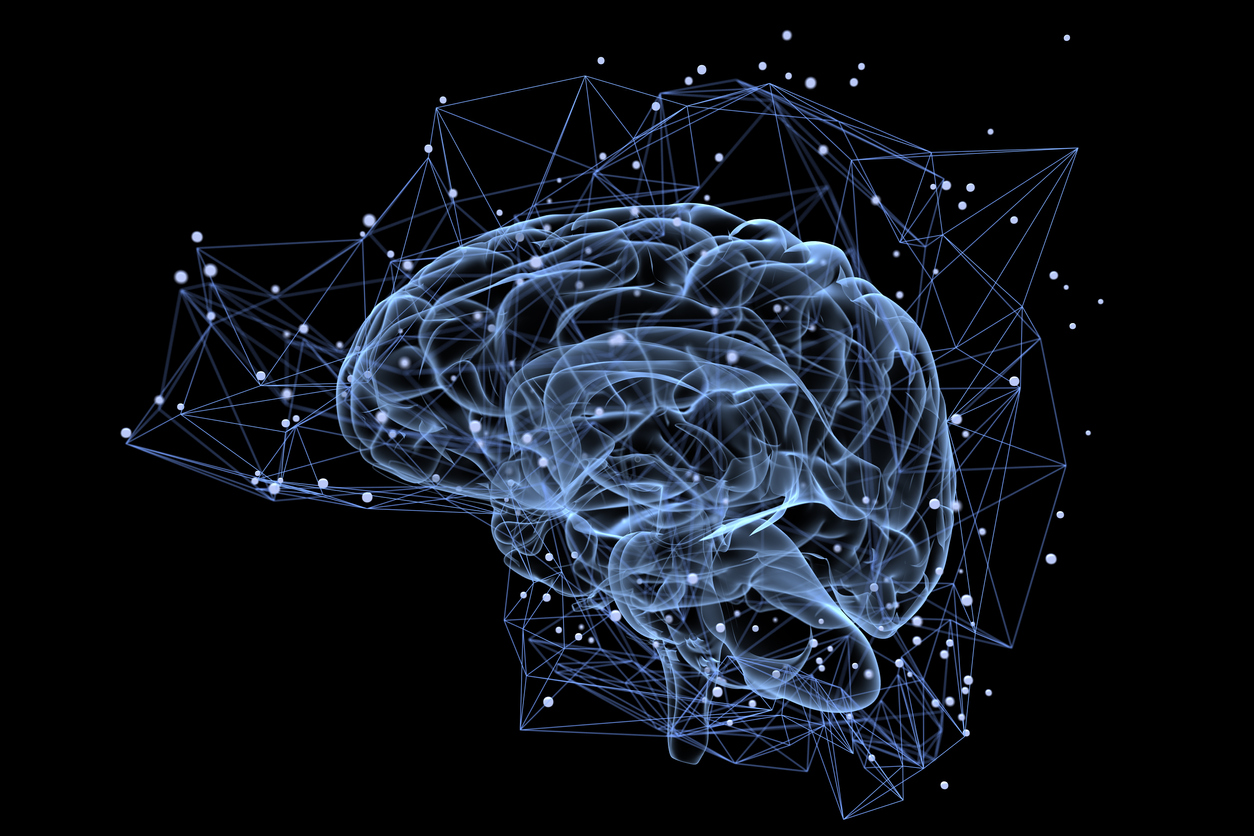
Thalamus regulates adaptability of the adult brain
6 October 2023

6 October 2023

It is generally believed that the adaptability of the adult brain mainly takes place in the cortex. However, a new study from the Netherlands Institute for Neuroscience shows that the thalamus, a relay station for incoming motor and sensory information, plays an unexpectedly important role in this process. “This could be an interesting starting point for various therapies,” says Christiaan Levelt.
Learning new things requires a tremendous capacity of our brains. The adaptation of our brain as a result of new experiences is called plasticity. There are periods during our development when neural networks show a lot of plasticity, known as critical periods. But also the adult brain is capable of adapting. Where this plasticity takes place in adult brain is not well understood.
To gain more insight into this question, Yi Qin and his colleagues, under the supervision of Christiaan Levelt, examined the visual system of mice. This is a popular model for studying plasticity due to its ease of manipulation. Visual information reaches the thalamus through the retina. This brain nucleus then transmits processed information to the visual cortex and vice versa. An experiment in mice can clearly demonstrate how well the adult brain is able to adapt. When one eye of the mouse is occluded for several days, the visual cortex starts to respond less effectively to the closed eye and better to the open eye. How this is precisely regulated has been unclear for a long time. But these new results bring an important player to the forefront: the thalamus.
Christiaan Levelt: “Five years ago, we discovered that the thalamus plays a crucial role in the plasticity of the visual cortex during critical periods of development. This has changed our perspective on how this whole system works. We all thought that this process was regulated by the visual cortex, but it turned out not to be the whole story. We found out by removing a very specific component, the GABA-alpha 1 subunit, in the thalamus of mice during their critical period for vision. This component is responsible for inhibiting the thalamus, so its removal resulted in reduced inhibition. When we closed one eye in these mice, the shift in responses no longer occurred. Because the adult brain uses different plasticity mechanisms than the developing brain, an important question was whether adaptation in the adult visual system also involved the thalamus”.
Yi Qin: “In the current study, we performed the same experiment in adult mice and observed similar results. We observed that plasticity also took place in the adult thalamus, but disappeared when we removed the alpha-1 subunit. Consequently, there was no longer a shift in the cortex either. Since we know that the visual cortex also sends information back to the thalamus through a feedback mechanism, we were curious if the visual cortex also plays a role in plasticity of the thalamus. We investigated this by reversing the experiment and shutting down the visual cortex. What happens to the shift in responses in the thalamus then? In adult animals, we did not see any difference: the shift persisted. However, in animals during their critical period, we observed that when we shut down the visual cortex, the shift reverted back in the thalamus. So, at a young age, plasticity in the thalamus and cortex influence each other much more, while in the adult brain, the thalamus is particularly important for plasticity in the cortex but not the other way around.”
Levelt continues: “Plasticity is important in many processes. We are currently focusing on sensory plasticity (vision), but plasticity is also fundamental for memory and other functions. These new insights could be relevant, for example, in understanding learning disabilities. It is possible that the origin of these problems lies in the thalamus rather than the cortex. Therefore, a different approach is needed. Instead of solely looking at the cortex, we should also consider the thalamus when it comes to therapies and the pathogenesis of these issues. This is an important new interpretation.”
Qin: “Even in the case of lazy eye, it is assumed to be a problem of the cortex, but it could also involve the thalamus. In Europe, we test for the presence of lazy eye from a young age. This condition can be corrected during the critical period by temporarily patching the ‘good eye,’ which strengthens the connections to the weaker eye. In the US, for example, this is not routinely checked at a young age, resulting in more people carrying a lazy eye into adulthood. Since the critical period has already passed for them, it becomes more challenging to treat these individuals. Our study provides a hint that we need to look beyond the cortex, which can provide guidance for a new treatment strategy.”
Source: eLife

The Friends Foundation facilitates groundbreaking brain research. You can help us with that.
Support our work